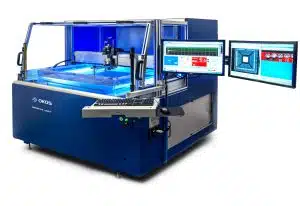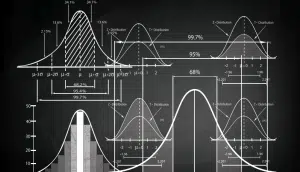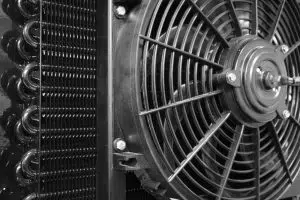As most readers are aware, the data center industry has put an increased focus on energy efficiency and environmental impact. Data centers in the United States are estimated to consume nearly 2% of the total electricity. The de facto metric used in the data center industry to evaluate energy efficiency has been the Power Usage Effectiveness (PUE), as defined by The Green Grid … [Read more...]
Thermocouples Basics Part 2: How They Are Made and Its Measurement System
Continuing from part 1, and the advantages of thermocouples, we will now visit the process to make a thermocouple and its measurement system. The way thermocouples are made is very simple. We have a thermocouple welder, shown in Figure 1, as a small machine. The ends of the two wires are twisted to digital wires together, and then each set of wires touches to the point where … [Read more...]
Advanced SAM Validates Integrity of Diffusion Bonds
For bond quality testing, Scanning Acoustic Microscopy offers far greater accuracy and reliability than traditional helium leak testing Introduction Industries with demanding metal bonding applications are increasingly relying on diffusion bonding, an essential joining method for achieving a high-purity interface between two similar or even dissimilar metals. The process … [Read more...]
Rank Sum Tests
Introduction The previous column in this series described methods for assessing whether a set of data was normally distributed [1]. In the event that data is shown to not have a normal distribution, one might ask how to conduct a statistical analysis on it given that many statistical tests are developed on the assumption that the data are normal. For example, how can two … [Read more...]
Rapid and Accurate Analytical Model for Predicting Axial Fan Performance in Electronics Cooling
By Wenguang Zhao, Sahan Wasala, and Tim Persoons Introduction Forced air cooling remains essential for dissipating the heat generated by high-power-density devices in modern electronics [1]. Axial fans are widely used in information technology, telecommunications, automotive, and aerospace applications for air cooling. The aerodynamic performance (P-Q) curve of fans … [Read more...]
- « Previous Page
- 1
- …
- 11
- 12
- 13
- 14
- 15
- …
- 180
- Next Page »










